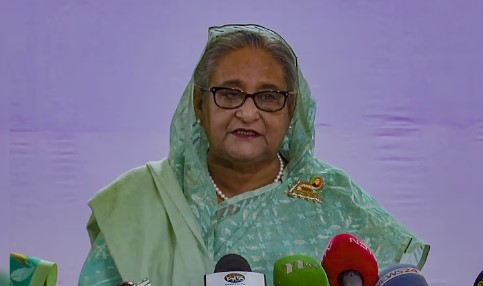Recent intelligence reports suggest that the regime change in Bangladesh, which led to Sheikh Hasina’s ouster, was orchestrated with significant involvement from Pakistan’s Inter-Services Intelligence (ISI) and China.
According to these reports, a detailed plan for the political upheaval was drafted in London with collaboration from ISI officials.
Bangladeshi authorities claim to have evidence of meetings between Tarique Rahman, the acting chief of the Bangladesh Nationalist Party (BNP) and son of Khaleda Zia, and ISI officials in Saudi Arabia.
This intelligence points to a concerted effort by Pakistan and China to destabilize Hasina’s Government and facilitate a return to power for the BNP, which is reportedly pro-Pakistan.
In the run-up to the unrest, numerous “anti-Bangladesh” accounts on X were observed inciting the protests, with over 500 negative posts targeting the Hasina Government, including several from Pakistani accounts.
Sources reveal that the Pakistan Army and ISI aimed to create turmoil and reinstall the BNP. China, working through the ISI, is also said to have contributed to the escalation of the protests.
What began as a protest against a quota system for government jobs evolved into a broader anti-government movement. The protests resulted in over 300 deaths and numerous injuries.
The Islami Chhatra Shibir (ICS), the student wing of Jamaat-e-Islami Bangladesh, which is known for its anti-Bharat stance, played a significant role in inflaming the situation. Intelligence sources suggest that ICS members meticulously planned and funded the protests, with substantial financial support believed to come from Chinese entities in Pakistan.
Social media analysis during the protests revealed that much of the content against the Awami League, including videos of violence and posters demonizing Sheikh Hasina, was created by BNP-affiliated accounts and amplified by US-based accounts.
The protests originated from a contentious quota system that allocated up to 30 per cent of government jobs to relatives of veterans from Bangladesh’s 1971 independence war against Pakistan. Despite the Supreme Court reducing these quotas to 5 per cent, the protests evolved into a broader demand for Hasina’s resignation. On August 4, violence intensified, resulting in over 100 deaths in clashes with police.
On Monday, Sheikh Hasina resigned and fled the country, leading to a military takeover. Bangladesh President Mohammed Shahabuddin announced the dissolution of Parliament and the formation of an interim government. He also ordered the release of former Prime Minister Khaleda Zia.

















